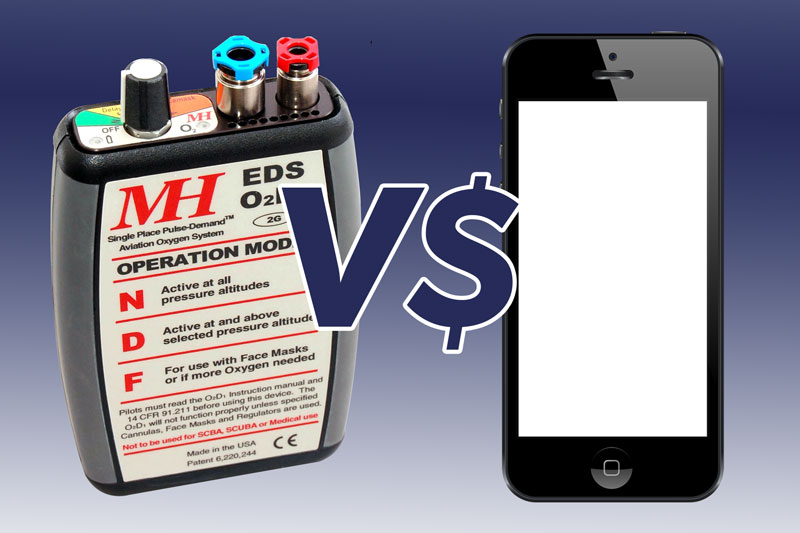Why Does an EDS Cost as Much as an iPhone?
Why Does an EDS Cost as Much as an iPhone?
Why does the EDS cost as much as a smartphone that seems to be just as, if not more, complicated than the EDS unit?
What They Share in Common
The EDS and a smartphone both contain sophisticated, patented technologies which require precision in design, development, testing, calibration and production, they are both designed in the USA, and both solve problems their creators’ felt deserved practical solutions.
How Are They Different?
Economies of Scale: Thousands vs Billions
We don’t have the benefit of marketing the EDS anywhere outside of the aviation market and thus the scale of our sales and production is limited to the size of our industry. While we’re proud that thousands of EDS units are in the skies helping pilots enjoy, longer, effort-free flights, there is no comparison to our production levels and an iPhone’s. To be more specific, by 2022 it is estimated the iPhone has sold over 2.2 billion units over its lifetime. That’s an iPhone for over a quarter of the population of planet Earth. At that scale, if Apple averaged only one dollar of profit from each iPhone after all their expenses, they would still be a multi-billion-dollar company.
Regulation and Limits to Scale
The recreational and sports aviation industry, which the EDS serves, is limited in its scale. Since 1993, when the EDS was released, interest quickly grew to bring the EDS and its oxygen-saving technology to the medical market. Expanding the EDS to medicine could have greatly expanded the scale of its production and brought down its cost. The FDA, however, which treats any oxygen device as a medical device (and oxygen for consumption as a drug), vigorously inhibits any such marketing unless it is registered as a medical device and strictly sold through pre-approved marketing and distribution methods. FDA approval became something outside the expertise and capabilities of Mountain High. On the other hand, the FAA requires the use of oxygen in aviation, placing such equipment and AVO/ABO marked oxygen just barely outside the auspices of the FDA. With the FDA on one side and the FAA on the other our market freedom is indeed severely restricted.
The Cost and Risk of Research and Development
Much R&D, money and man-years of testing along with state-of-the-art micro-electronics and proprietary sensor technology went into the patented EDS system so that it could be the best oxygen delivery technology available to the aviator. The R&D was a costly gamble, but became obviously worth it in the first year it was released (1993). Feedback shows that aviators all over the world and of all types appreciate and use the EDS every day.
Return on Investment
Saving oxygen saves money. With the EDS conserving oxygen at up to 80-90% compared with constant-flow setups, our pilots see a return on investment quickly, especially those who fly a lot. Couple the money saved through oxygen savings with time saved (not) filling cylinders, and it becomes easy to see why enjoying the benefits of automated oxygen delivery in-flight is less expensive than it may look.



